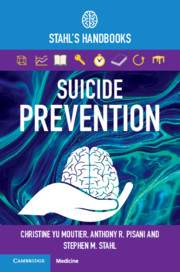Book contents
- Suicide Prevention
- Suicide Prevention
- Copyright page
- Contents
- Acknowledgements
- Section 1 Suicide Prevention Overview
- Section 2 Clinical Risk Assessment and Care
- Section 3 Special Topics: Medicolegal Considerations and Specific Populations
- 11 Medicolegal Risk Management
- 12 The Role of Culture and Societal Factors
- 13 Youth and Adolescents
- 14 Military and Veterans
- 15 Older Adults
- 16 LGBTQ Populations
- 17 Suicide Loss Survivors
- Appendix Resource List
- Index
- References
13 - Youth and Adolescents
from Section 3 - Special Topics: Medicolegal Considerations and Specific Populations
Published online by Cambridge University Press: 15 May 2021
- Suicide Prevention
- Suicide Prevention
- Copyright page
- Contents
- Acknowledgements
- Section 1 Suicide Prevention Overview
- Section 2 Clinical Risk Assessment and Care
- Section 3 Special Topics: Medicolegal Considerations and Specific Populations
- 11 Medicolegal Risk Management
- 12 The Role of Culture and Societal Factors
- 13 Youth and Adolescents
- 14 Military and Veterans
- 15 Older Adults
- 16 LGBTQ Populations
- 17 Suicide Loss Survivors
- Appendix Resource List
- Index
- References
Summary
Suicide among youth is a major public health concern globally. According to the WHO, suicide is the second leading cause of death in the world for 10–29-year-olds. It is important to recognize that young people are more likely to die by suicide than by any other single medical illness, underscoring the need for increased emphasis on medical education regarding suicide and the potential lifesaving impact of identification and effective care for youths with elevated suicide risk. Because suicidal ideation and behavior tend to have their first onsets during adolescence, this developmental period may offer an important window of opportunity to prevent the development of suicidal thoughts and behaviors, which lead to elevated risk of premature death, mental health and functioning problems, and psychological pain and distress.
- Type
- Chapter
- Information
- Suicide PreventionStahl's Handbooks, pp. 216 - 236Publisher: Cambridge University PressPrint publication year: 2021



